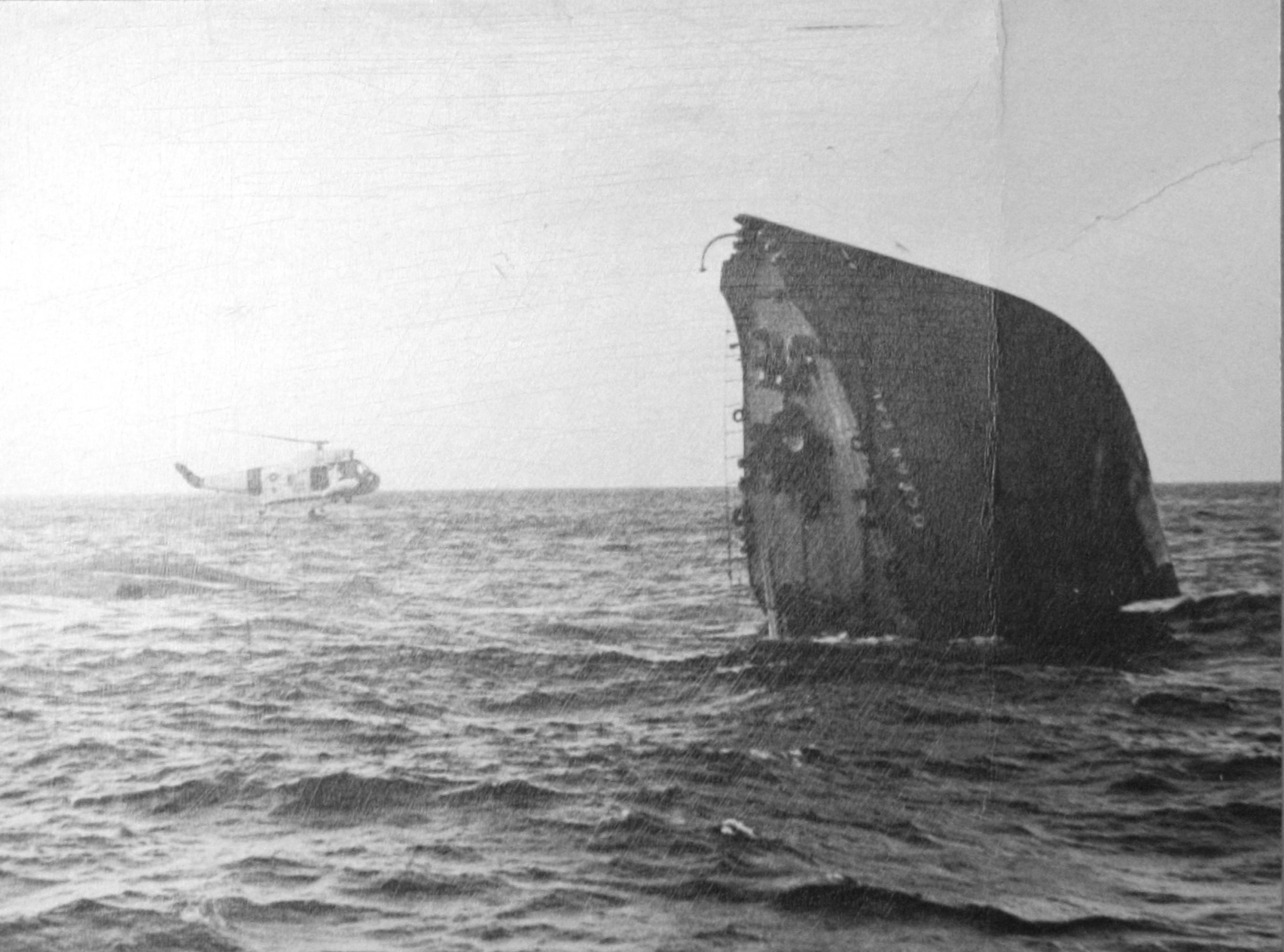U.S. Maritime Commission Cadre /
U.S. Maritime Service Chief Petty Office cap badge (Type 1)
One piece construction. Seal, 25mm diameter; Anchor, 50mm length.
Obscured AE CO N.Y. hallmark (American Emblem Company)
Anchor and device stamped brass; blue enamel band and red, white & blue shield.
Early Second World War era; 1942.
This is the first design of the USMS CPO hat badge; it was worn in 1942 up until the formal transfer of the Prospective Licensed Officer training program from the USCG to the WSA/USMS in July 1942. The badge itself may be found in plain brass, as well as plated silver or nickel. This brass pattern was issued in 1942, followed by plated silver or nickel badges and then a new design came about in August 1942. A description of the second design may be found here. In practice, in the period leading up to the Second World War, USMS CPOs, more often than not wore the more handsome embroidered hat badges – which were of the same design as the stamped metal device, albeit without the band of stars – as evidenced by an image in the article “Heros of Wartime Science and Mercy” in National Geographic Magazine, December 1943 page 717, as seen here. These badge were worn mostly by officer trainees – who held the rank of Chief Petty Officer.
Concurrent with WSA control of the USMS, and the stripping away of the ship-building component of the USMS, came a color and design shift: for the hat badge: the illustrated deco motif of a stylized Federal “classic shield” gave way to a detailed foul anchor charge on “official shield” of finer detail. Whereas the first design was predominantly blue, the color changed to red – perhaps to echo the red of chevrons and other woven cloth devices found on an enlistedman’s uniform. My research has alluded to that late in the war, the CPO badge further changed to match the pattern found on USMS buttons (1942-1954); I will post an image of this badge at a later date.
J. Tonelli in Visor Hats of the US Armed Forces incorrectly asserts that the illustrated hat badge was worn by USMS Warrant Officers; however, regulations of the time state that Warrant Officers wear the same devices as regular, commissioned officers. This is a commonly made mistake when attempting to devise a typology of hat devices for a relatively small organization with a small array of hat insignia.
Overall, the USMS only had a handful of CPOs and these were attached to USMS enrollment offices, training stations, officer schools and the US Merchant Marine Academy; CPO insignia was not issued to regular seamen who were matriculated from or were certified by the USMS. CPOs represented unlicensed seaman hired by the USMS skilled in the maritime industry with some seniority or specialized skills not satisfying the grade of Warrant Officer; it is useful to think of USMS CPOs as experienced Able Seamen (AB).
USMS CPO Hat badge, obverse.
This device was worn by Merchant Mariners attached to the US Maritime Commission involved in training duties; this badge eventually found its way to be only worn by senior unlicensed personnel (CPOs). This hat badge continued to be issued until stocks were depleted and eventually replaced by a badge of the same design – albeit in nickel (pre- and early war), and then replaced by the more familiar USMS CPO device. There is some speculation that the USMC/USMS CPO device was modeled after the US Coast Guard enlisted hat badge; the USCG badge went into production in 1942, around the same time as the production of the USMC/USMS badge.
The mystery of the design lies in the double-anchor and seal motif. If analyzed closely, the badge hearkens to the precursor agency of both the US Maritime Commission and US Coast Guard: the US Revenue Cutter Service. In this light, the anchor stock and flukes, and as well as the rope on the stock themselves echo the old seal. At the time of its creation, it was not stated in USMC regulations, but the uniforms and ranks of the soon-to-be-formed USMS were eventually codified to mirror that of the US Coast Guard. In time, in an effort to create an esprit de corps and the forging of an independent identity, the badge change to the second design.
USMS CPO Hat badge, reverse (detail).
Note the curious “CO N.Y.” hallmark – the complete “AE CO N.Y.” mark is obscured by the post – this is of the American Emblem Company of Utica, New York. This firm produced a number of Merchant Marine and Maritime Service items during the Second World War, most notably the ubiquitous Merchant Mariner pin. In regard to this specific badge, NS Meyer produced a very similar insignia set for USMS officers using a similar central device. With the button and device change in 1942, AE Co. was no longer contracted to make USMS CPO badges; rather, the jobbing went to Coro.




















